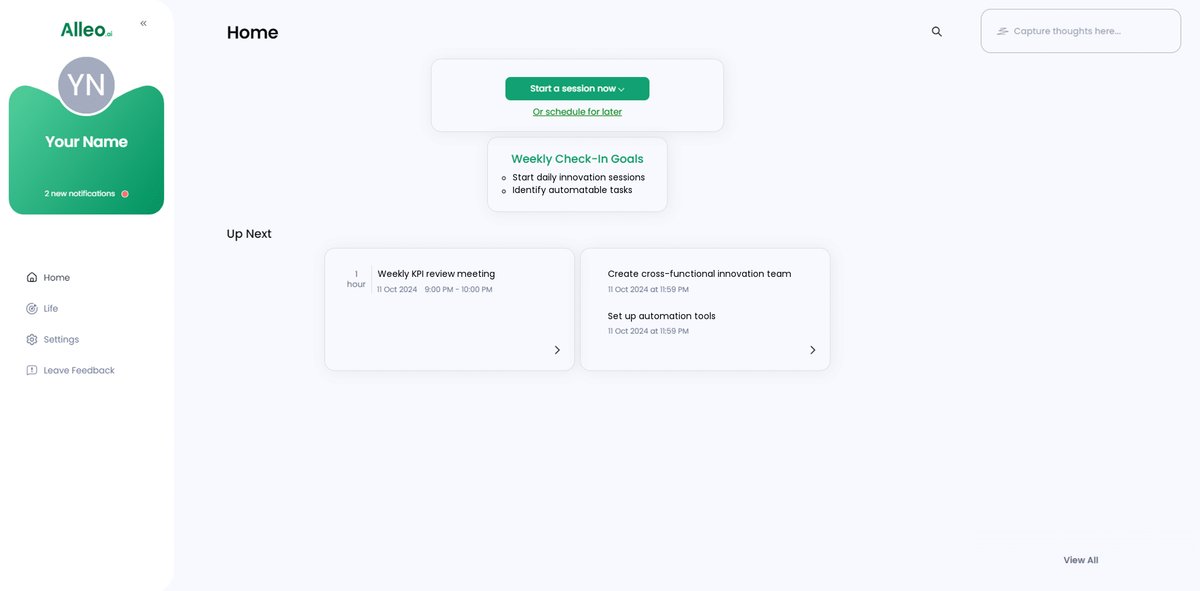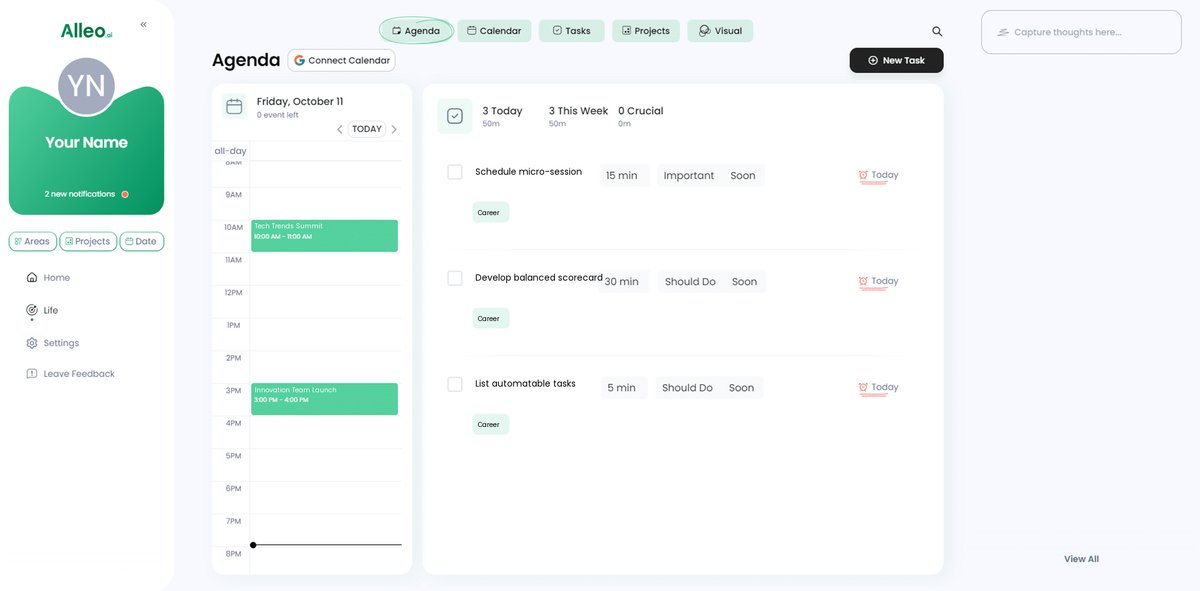Tech Managers: 7 Fundamental Strategies for Balancing Innovation and Daily Operations
Ever feel like you’re juggling too many balls, trying to keep up with the latest tech while managing daily tasks in IT project management?
As a life coach, I’ve helped many professionals navigate these challenges. Often, tech managers face immense pressure to stay current with emerging trends while handling day-to-day operations, struggling with balancing innovation and operations.
In this article, you’ll discover actionable strategies to balance innovation and operations, ensuring you stay ahead without burning out. We’ll explore digital transformation leadership and agile management techniques to boost tech team productivity.
Let’s dive into how to cultivate an innovation culture in IT while maintaining operational efficiency in technology.

The Pressures of Balancing Innovation and Daily Operations
Managing tech can feel like you’re constantly walking a tightrope. Balancing innovation and operations is crucial for IT project management, but daily tasks can’t be neglected.
Many clients struggle with this balance in digital transformation leadership, leading to stress and burnout.
The pressure can be intense. Imposter syndrome often creeps in, making you doubt your capabilities in tech innovation strategies.
You might feel like you’re always playing catch-up in operational efficiency in technology.
In my experience, tech managers often feel overwhelmed. They juggle team responsibilities and the need to innovate, highlighting the importance of time management for IT leaders.
This dual pressure of balancing tech priorities can be paralyzing.
For example, I’ve seen several managers who want to foster an innovation culture in IT but are bogged down by daily tasks. They end up feeling stuck in a rut, struggling with tech team productivity and IT resource allocation.

A Roadmap to Balance Innovation and Daily Operations
Balancing innovation and operations requires a few key steps. Here are the main areas to focus on to make progress in IT project management and digital transformation leadership.
- Implement daily innovation micro-sessions: Schedule short, daily brainstorming sessions for innovative ideas to foster an innovation culture in IT.
- Align operational KPIs with strategic objectives: Ensure KPIs support long-term goals and adjust as needed for operational efficiency in technology.
- Establish a cross-functional innovation team: Form diverse teams with clear goals and provide necessary resources for balancing tech priorities.
- Automate routine tasks to free up time: Identify repetitive tasks and use tools to automate them, improving tech team productivity.
- Rotate team members through innovation projects: Create rotation schedules and encourage knowledge sharing to enhance IT resource allocation.
- Create a balanced scorecard for tracking progress: Develop a scorecard with real-time tracking tools for effective time management for IT leaders.
- Set up regular “tech trend” learning sessions: Schedule monthly sessions and invite guest speakers to stay updated on tech innovation strategies.
Let’s dive into these agile management techniques for balancing innovation and operations!
1: Implement daily innovation micro-sessions
Introducing daily innovation micro-sessions can significantly impact your team’s creativity and productivity, helping in balancing innovation and operations.
Actionable Steps:
- Schedule 15-minute daily innovation sessions: Encourage team members to brainstorm and share innovative ideas for IT project management.
- Document and review ideas weekly: Use a shared platform to track progress and revisit ideas, enhancing operational efficiency in technology.
- Incorporate quick wins: Identify and implement small, immediate changes from these sessions to boost tech team productivity.
Explanation:
These steps are crucial because they create a structured approach to fostering innovation culture in IT. By regularly scheduling these sessions, you encourage continuous improvement and a culture of creativity while balancing tech priorities.
According to Govert van Sandwijk, integrating innovation into daily routines can transform your team’s approach to problem-solving. This practice helps align your team’s efforts with long-term goals while managing daily tasks efficiently, a key aspect of digital transformation leadership.
Key benefits of daily innovation micro-sessions:
- Boosts creative thinking
- Enhances team collaboration
- Promotes a culture of continuous improvement
Implementing these micro-sessions will pave the way for consistent innovation and a proactive team culture, supporting tech innovation strategies and balancing innovation and operations.

2: Align operational KPIs with strategic objectives
Aligning operational KPIs with strategic objectives is vital to ensuring that daily activities support long-term goals, especially when balancing innovation and operations in IT project management.
Actionable Steps:
- Define clear KPIs: Ensure each KPI supports long-term strategic goals and is measurable, focusing on tech innovation strategies and operational efficiency in technology.
- Regularly review KPIs with the team: Hold monthly meetings to assess alignment and progress, incorporating agile management techniques.
- Adjust as needed: Be flexible and willing to update KPIs based on evolving goals and feedback, crucial for balancing tech priorities.
Explanation:
These steps matter because they ensure that daily operations align with your strategic vision for digital transformation leadership. Regularly reviewing and adjusting KPIs keeps your team focused on what truly matters, enhancing tech team productivity.
According to ESM Group, aligning operational KPIs with strategic objectives helps monitor performance across multiple dimensions. This alignment fosters a proactive approach to achieving long-term success, essential for balancing innovation and operations.
With these strategies, you’ll see improved coherence between daily tasks and your overarching goals, effectively balancing innovation and operations in your IT resource allocation.

3: Establish a cross-functional innovation team
Creating a cross-functional innovation team is essential for nurturing diverse perspectives and fostering creativity while balancing innovation and operations.
Actionable Steps:
- Form a diverse team: Include members from different departments to bring varied perspectives in IT project management.
- Set clear goals for the team: Define what success looks like and how it will be measured in terms of tech innovation strategies.
- Provide resources and support: Ensure the team has the tools and time needed to innovate effectively, focusing on operational efficiency in technology.
Explanation:
These steps are crucial because they promote collaboration and a holistic approach to problem-solving in digital transformation leadership.
According to the Carnegie Mellon University, diverse teams enhance innovation by combining different skills and viewpoints.
This approach ensures that your innovation efforts are well-rounded and aligned with your strategic goals, balancing tech priorities effectively.
Key elements of an effective cross-functional innovation team:
- Diverse skill sets and backgrounds
- Clear communication channels
- Shared vision and goals
By establishing a cross-functional team, you can drive innovation and operational excellence simultaneously, improving tech team productivity and fostering an innovation culture in IT.

4: Automate routine tasks to free up time
Automating routine tasks can significantly increase your team’s efficiency and free up valuable time for strategic work, helping in balancing innovation and operations.
Actionable Steps:
- Identify repetitive tasks: List daily tasks that can be automated with available tools, improving operational efficiency in technology.
- Implement automation software: Use tools like Zapier or Power Automate to streamline these tasks, enhancing tech team productivity.
- Regularly evaluate and update: Continuously check the automation processes to ensure they remain efficient and effective, a key aspect of IT project management.
Explanation:
These steps are essential because they help tech managers focus on high-value activities, crucial for balancing tech priorities.
According to Emeritus, automation can reduce operational burdens and enhance productivity, supporting digital transformation leadership.
By regularly updating automation processes, you can adapt to evolving needs and maintain operational efficiency, an important agile management technique.
With routine tasks automated, your team can dedicate more time to innovation and strategic projects, fostering an innovation culture in IT while balancing innovation and operations.

5: Rotate team members through innovation projects
Rotating team members through innovation projects can boost creativity and skill diversification, which is crucial when balancing innovation and operations in IT project management.
Actionable Steps:
- Create a rotation schedule: Allow team members to work on different innovation projects for set periods, enhancing digital transformation leadership.
- Encourage knowledge sharing: Hold debrief sessions where team members share insights and lessons learned from their projects, promoting agile management techniques.
Explanation:
These steps are important because they foster a culture of continuous learning and collaboration, essential for tech team productivity and operational efficiency in technology.
According to Carnegie Mellon University, diverse teams enhance innovation by combining different skills and perspectives. Regular rotation and knowledge sharing ensure that your team remains agile and innovative, helping in balancing tech priorities.
Benefits of rotating team members through projects:
- Expands individual skill sets
- Prevents stagnation and burnout
- Encourages fresh perspectives on challenges
By rotating team members, you can maintain a dynamic and engaged workforce, ready to tackle new challenges and implement effective tech innovation strategies while balancing innovation and operations.

6: Create a balanced scorecard for tracking progress
Creating a balanced scorecard is essential for tech managers to track progress and ensure alignment with strategic goals while balancing innovation and operations.
Actionable Steps:
- Develop comprehensive metrics: Include financial, customer, internal process, and learning & growth perspectives in your scorecard for effective IT project management.
- Use real-time tracking tools: Implement software to continuously monitor these metrics and provide updates, supporting digital transformation leadership.
- Hold quarterly reviews: Regularly assess performance, make necessary adjustments, and ensure alignment with long-term objectives, utilizing agile management techniques.
Explanation:
These steps matter because a balanced scorecard offers a comprehensive view of your organization’s performance, helping balance tech priorities.
Real-time tracking tools help identify issues early and adjust strategies accordingly, improving tech team productivity.
According to the ESM Group, this approach helps maintain focus on both short-term operations and long-term goals, essential for balancing innovation and operations.
By holding quarterly reviews, you can ensure sustained alignment and continuous improvement, fostering an innovation culture in IT.
This method helps you stay on track while fostering innovation and operational efficiency in technology.

7: Set up regular “tech trend” learning sessions
Regular “tech trend” learning sessions will help your team stay current with emerging technologies and foster a continuous learning culture, essential for balancing innovation and operations in IT project management.
Actionable Steps:
- Schedule monthly sessions: Dedicate time for your team to learn about the latest tech trends and digital transformation leadership strategies.
- Invite guest speakers: Bring in industry experts to share insights and experiences on tech innovation strategies and operational efficiency in technology.
- Encourage hands-on experimentation: Allow the team to test and explore new technologies in a controlled environment, promoting an innovation culture in IT.
Explanation:
These steps are crucial because they ensure your team remains informed and adaptable. Regular learning sessions help integrate new knowledge into daily operations, keeping your team innovative while balancing tech priorities.
According to Carnegie Mellon University, connecting technology to business outcomes is essential for sustained success. Continuous learning fosters a culture that embraces change and drives growth, improving tech team productivity.
By setting up these sessions, you’ll create an environment where innovation thrives, enhancing your ability to balance innovation and operations effectively.

Partner with Alleo for Balanced Innovation
We’ve explored the challenges of balancing innovation and operations, and the steps to achieve it in IT project management.
But did you know you can work directly with Alleo to make this journey easier and faster, enhancing your digital transformation leadership?
Set up an account with Alleo in minutes. Create a personalized plan tailored to your specific challenges in balancing tech priorities and operational efficiency in technology.
Our AI coach offers full coaching sessions like any human coach, focusing on innovation culture in IT and agile management techniques. Alleo follows up on your progress and handles changes to improve tech team productivity.
Stay accountable with text and push notifications, aiding in time management for IT leaders.
Ready to get started for free? Let me show you how to implement tech innovation strategies while balancing innovation and operations!
Step 1: Log In or Create Your Account
To begin your journey towards balancing innovation and daily operations, log in to your Alleo account or create a new one in just a few clicks.

Step 2: Choose “Building better habits and routines”
Select “Building better habits and routines” to establish a solid foundation for balancing innovation and daily operations, helping you create a structured approach to managing your time and resources effectively.

Step 3: Selecting the life area you want to focus on
Choose “Career” as your focus area to address the challenges of balancing innovation and daily operations in tech management, allowing Alleo’s AI coach to provide tailored strategies for improving your professional performance and work-life balance.

Step 4: Starting a Coaching Session
Begin your journey with Alleo by scheduling an initial intake session, where our AI coach will help you create a personalized plan to balance innovation and daily operations, setting you on the path to success.

Step 5: Viewing and managing goals after the session
After your coaching session, check the Alleo app’s home page to view and manage the goals you discussed, ensuring you stay on track with balancing innovation and daily operations.

Step 6: Adding events to your calendar or app
Easily track your progress in balancing innovation and daily operations by adding key events, such as daily micro-sessions or tech trend learning sessions, to your calendar or app, allowing you to visualize your commitments and stay accountable to your goals.

Finding Balance: Your Path to Success
Navigating the demands of tech management is challenging. Balancing innovation and operations in IT project management can feel overwhelming.
But you don’t have to do it alone. With the right digital transformation leadership strategies, you can excel.
Implementing daily innovation sessions, aligning KPIs, and automating tasks are powerful steps for tech team productivity. Rotating team members and keeping up with tech trends make a significant impact on operational efficiency in technology.
Remember, you have the tools to succeed in balancing tech priorities.
Lean on Alleo to guide you. Our AI coach is here to support your journey in IT resource allocation and time management for IT leaders.
Start today. Transform the way you manage innovation and operations with agile management techniques.
With Alleo, you’re never alone in fostering an innovation culture in IT.
Ready to begin implementing tech innovation strategies?